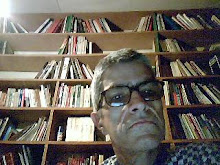The decision of Xanana Gusmão, a former leader of the resistance against Timor-Leste's occupation by Indonesia, to step down as prime minister in February 2015 led to the formation of a government of national unity, backed both by Mr Gusmão's CNRT and Fretilin, the party of the current prime minister, Rui Maria de Araújo. The support of smaller parties afforded the coalition government the backing of all 65 members of parliament for some time, leaving Timor-Leste bereft of a parliamentary opposition.
However, this cosy set-up has led to government clashes with the president, José Maria Vasconcelos, who is popularly known by his nom de guerre, Taur Matan Ruak. In February 2016 Taur Matan Ruak made a withering criticism of Mr Gusmão and what he sees as political corruption. This is significant, as Taur Matan Rauk has decided to stand down as president in 2017, running for parliament instead with the support of a new party, the People's Liberation Party (PLP), in a way that reopens the sphere of democratic competition. The perceived closeness of a small party, the Partido Democrático (PD), to the president led in May 2016 to the PD's own expulsion from the ruling unity government. (PD ministers in the government opted to stay as independents, forestalling a reshuffle.)
Fretilin set for an easy presidential win
This pits the supporters of the unity government against those who focus on corruption and claim that the government is wasting the country's petroleum wealth on trophy projects. The first election due in 2017 is for the presidency, which is likely to be held in March, with a run-off in April. A new president will take office on May 20th. So far, there are three candidates. Fretilin is backing its party leader, Mr Guterres, who lost out to Taur Matan Ruak in the 2012 presidential poll. Mr Guterres has emphasised his closeness to Mr Gusmão in a way that suggests he is seeking CNRT backing. The only other declared candidates are António Maher Lopes, known by his nom de guerre Fatuk Mutin, who was put forward by a minor party, the Socialist Party of Timor, as well as José António de Jesus das Neves, who goes by the nom de guerre Samala Rua. He is a former deputy commissioner of the Anti-Corruption Commission and is running as an independent. Presuming that CNRT does not run a separate candidate, this leaves the field wide open for an easy win by Mr Guterres. Speculation that a former president and Fretilin founder, José Manuel Ramos-Horta, currently the UN Special Representative to Guinea-Bissau, might run has so far proven unfounded.This will be followed in July by the legislative election. As CNRT and Fretilin appear to be continuing to co-operate, it is likely that these parties will win a majority in parliament. A poll conducted in November 2016 by the International Republican Institute (IRI), a pro-democracy think-tank, shows that Fretilin has the support of 44% of Timorese, while CNRT comes in at second place with the support of 19%. Only 3% of those surveyed supported the PD, and 2% the PLP, with other small amounts of backing other minor parties. Under a proportional representation system with a 3% threshold to secure a seat, Taur Matan Ruak may struggle. The opposition groups are likely to win only a handful of seats in total.
This reflects broad satisfaction with the governing coalition. In the IRI poll, 74% stated that the government was doing a good job, and reported improvements in healthcare, education and electricity supply. There is strong public support for state investment in the Oecusse special economic zone and the Tasi Mane petrochemical complex. At present, there appears to be little public opposition to the way that the government is spending petroleum wealth. Over the longer term, however, as petroleum wealth runs out, a stronger political debate may emerge in Timor-Leste. In policy terms, there seems little reason to expect the 2017 elections to produce a sharp change. The Economist


Nenhum comentário:
Postar um comentário